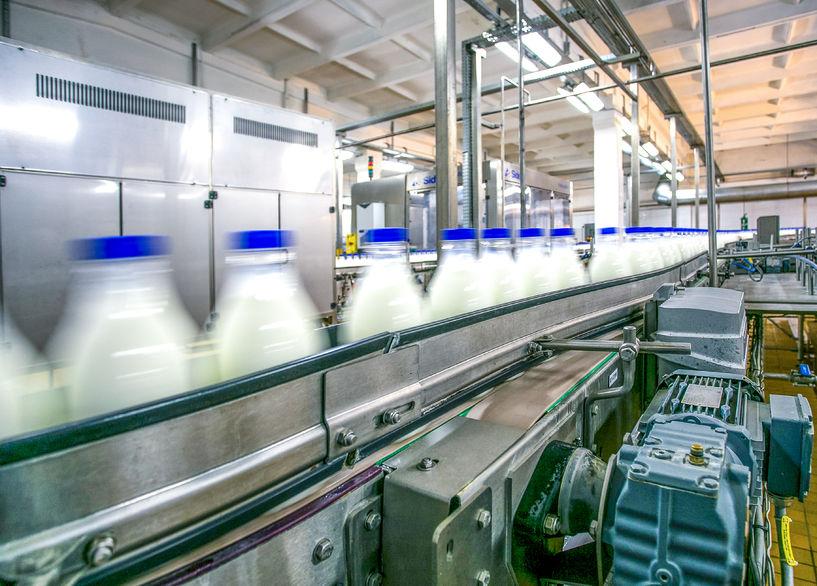
A new report from the UK’s leading sustainability experts shows for the first time the scale of milk wastes across the food chain, from processing to homes.
It highlights ways the industry and public can significantly reduce the 330,000 tonnes of total milk lost each year, worth more than £150 million.
Milk waste in the home is by far the largest contributor, accounting for nearly 90% of UK milk waste with 290,000 tonnes thrown every year.
This equates to more than 490 million pints of milk as a nation - or eighteen and a half pints per household.
Furthermore, milk waste in the supply chain, through breakages and leaks during transportation and in retail outlets, represents 30,000 tonnes; with an additional 13,000 tonnes of waste identified during processing.
WRAP’s report 'Opportunities to Reduce Waste along the Journey of Milk, from Dairy to Home' identifies key actions that could help reduce this waste by an estimated 90,000 tonnes per year.
It offers a potential combined saving of upwards of £40 million.
WRAP has begun work tackling the biggest trigger for waste in the home, refrigeration.
Milk waste in the home
Research shows that more than anything else, keeping milk at the right temperature is essential to stop it spoiling early, and the typical UK fridge at home is operating at 2°C warmer than the recommended Food Standards Agency guideline of between 0-5 degrees.
Moreover, many people don’t know what temperature their fridge is running at or have any easy way of knowing how to set it to the right temperature.
WRAP estimates reducing the temperature of fridges to below 5°C could stop more than 50,000 tonnes of milk waste every year, saving shoppers £25 million.
Another way to tackle the confusion around fridge temperatures could be the use of temperature sensitive labels on milk.
These use thermochromic inks, which change colour above or below a certain temperature threshold (e.g. 5°C), and could therefore display messages indicating that the fridge (and milk) is too warm.
As milk is a universal product in most people’s fridges, they could be a conduit to help improve awareness at a significant scale – with food waste prevention benefits across many other products.
'Little Blue Fridge'
In terms of existing labelling, WRAP’s best practice guidance for the choice and application of date labels and storage guidance, produced with Defra and the Food Standards Agency last year, champions the use of the Little Blue Fridge icon.
The icon supports the message to ‘keep in the fridge below 5°C’ on the front of all milk bottles.
The label and icon reflect the need for clearer storage instructions and WRAP is calling for the Little Blue Fridge to be more widely used on milk packaging.
Another way to reduce milk waste at home is increased freezing, and WRAP is working with the dairy sector to assess how increased freezing could assist in reducing milk waste at home.
Only a quarter of the population (26%) freeze milk compared with half who freeze meat (51%), and the number who freeze fish and seafood (37%) and bread (35%).
WRAP estimates that increasing freezing levels for milk to match those of fish and bread could cut more than 10,000 tonnes of waste, saving £5 million.
However, there are a number of quality and handing issues associated with freezing that have also been reported, such as the potential for bottles to split or leak.
he dairy sector is working to make sure that it’s clear which milk products can be frozen, and that more packs can withstand freezing’
Longer shelf life
WRAP also looked at the benefits that longer shelf lives could bring, and its research shows that increasing the average ‘Use By’ life available to consumers by just one day could reduce waste by more than 20,000 tonnes, or £10 million.
Industry continues to take positive steps to increase milk shelf life, including processing innovations, site hygiene best practices, and reducing time in the supply chain.
Smart labelling innovations that can adjust shelf life based on the condition of the milk might also offer a future opportunity to increase the life on-pack.
Milk waste in supply chain
Turning attention further along the supply chain, the most significant waste identified during milk processing arises from the process of separating cream from milk, which produces a material known as ‘separator desludge’.
This is usually sent straight to drain, but WRAP believes this is a potentially rich resource with high nutrient value proteins.
Further processing into materials suitable for food, or animal feed applications could reduce waste by an estimated 10,000 tonnes and cut disposal costs by around £1 million a year.
WRAP also identifies practical interventions to avoid milk waste in depots and retail stores, which could save industry an estimated £1.5 million.
For example, reviewing bottle design and specifications to avoid breakages and leaks which are the major causes of waste at this stage of the product journey.
WRAP will work with the sector through the Courtauld 2025 Dairy Working Group to help ensure the recommendations are implemented and plans to track improvements and innovations to pack design and labelling over time through its Retail Survey.
Progress will also be reported as part of a new target within The Dairy Roadmap - to increase product and packaging design features that help prevent consumer food waste.
